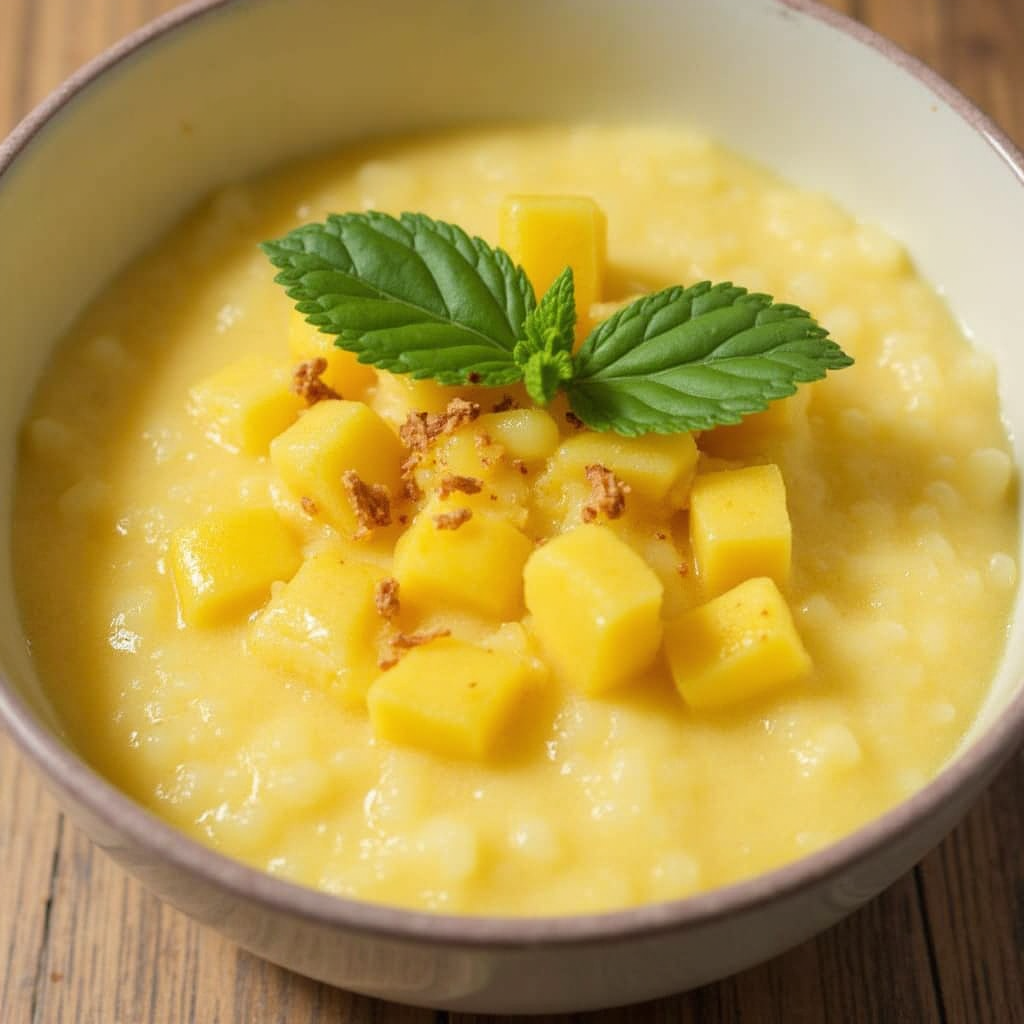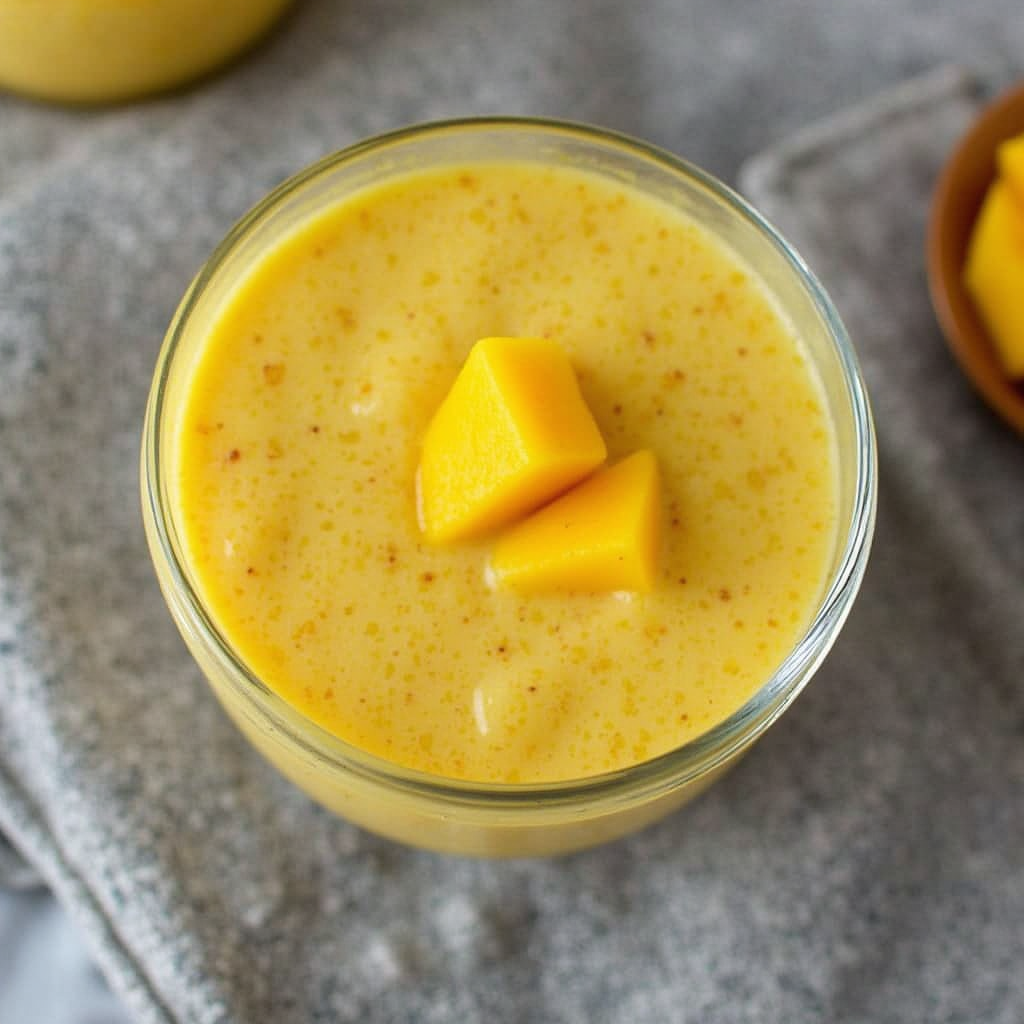Introduction
Mango sago is a delightful dessert from Asia, known for its sweet taste and smooth texture. This guide will help you learn how to make mango sago, adding a unique treat to your dessert options. You’ll also discover the essential ingredients and some creative twists to keep things interesting.
Ingredients Needed for Mango Sago Recipe
Starting your mango sago journey means picking the right ingredients. Here’s what you’ll need:

- Ripe mangos: These fruits give the dish its bold, tropical flavor.
- Sago pearls: Small tapioca pearls that add a playful texture.
- Coconut milk: It enhances the mango’s flavor with its creamy richness.
- Condensed milk or sugar: Sweeten the dish to your liking.
- Fresh cream (optional): Adds a bit of luxury.
Together, these ingredients make a tasty and attractive dessert.
Step-by-Step Guide to Preparing Mango Sago
Follow these steps to create the perfect mango sago:
- Cook the Sago Pearls: Boil the sago pearls until clear to avoid any crunchiness.
- Prepare the Mangoes: Peel and chop the mangoes. Puree half to smoothness and keep the rest for toppings.
- Mix Ingredients: Blend the sago, mango puree, and coconut milk. Add sweetness as desired.
- Chill: Cool the mix to let the flavors meld.
- Serve: Top with mango pieces and a splash of fresh cream for a beautiful dish.
These simple steps will help you make a great mango sago every time.
Variations of Mango Sago
To freshen up your dessert menu, try these simple twists on the traditional mango sago:
- With Pomelo: Add pomelo pieces to bring a sharp, tangy flavor that balances the sweetness.
- With Lychee: Mix in lychees for extra sweetness and a tropical touch.
- Vegan Version: Use almond or soy milk instead of coconut milk and sweeten with agave syrup for a vegan-friendly dish.
Trying new fruits and milk substitutes broadens the flavors and suits different diets, making mango sago a flexible dessert for any event.
Explore these options to perfect your mango sago. This dessert is not only tasty but also dresses up your meals, whether it’s a casual family dinner or a special gathering.
Nutritional Benefits of Mango Sago

Mango sago is more than just a tasty treat; it’s also healthy. Mangoes are full of vitamins A and C, which help your immune system and skin. They also have fiber, which is good for your digestion. Sago pearls are a low-fat energy source, and when mixed with coconut milk, the dessert has healthy fats good for your heart. Thus, mango sago is a wholesome choice that adds nutrients to your diet.
Tips and Tricks for the Perfect Mango Sago
Achieving the perfect mango sago involves more than just following a recipe—it’s about mastering the nuances that elevate the dish. Here are some expert tips:
- Selecting Mangoes: Choose mangoes that are sweet and ripe for the best flavor and natural sweetness.
- Cooking Sago: To prevent the pearls from sticking, stir continuously and rinse under cold water after boiling.
- Balancing Sweetness: Adjust the sweetness with condensed milk or sugar based on the sweetness of the mangoes and your personal preference.
- Chilling Time: Allow the dessert to chill thoroughly before serving to let the flavors meld beautifully.
These tips ensure that your mango sago turns out perfectly every time.
Serving Suggestions for Mango Sago
Mango sago is versatile, making it a fantastic dessert for various occasions. Consider these serving ideas to enhance its presentation and appeal:
- Individual Cups: Serve in small, clear cups to showcase the layers of mango and sago pearls.
- With Ice Cream: Top with a scoop of vanilla ice cream for an indulgent treat.
- Tropical Parfait: Layer mango sago with coconut yogurt and granola for a breakfast option or healthier dessert.

These serving suggestions can help make your mango sago even more enjoyable and fitting for any event or meal.
FAQs
What is Mango Sago?
Mango sago is a popular dessert that features ripe mangoes, sago pearls, and coconut milk, often sweetened with sugar or condensed milk. It combines the tropical flavor of mango with the chewy texture of sago pearls, creating a refreshing and creamy treat that is loved in many parts of Asia.
Are Tapioca Pearls the Same as Sago?
Although both tapioca pearls and sago pearls look similar and are used interchangeably in recipes, they are not the same. Tapioca pearls are made from the starch of the cassava plant, whereas sago pearls are made from the starch of the sago palm. Each type brings a slightly different texture and taste to dishes.
Why is My Mango Sago So Thick?
If your mango sago is too thick, it could be due to the sago pearls absorbing more liquid than expected. To fix this, you can add more coconut milk or a splash of water to adjust the consistency to your liking. Make sure to stir well to distribute the added liquid evenly.
How to Cook Mini Tapioca Pearls?
To cook mini tapioca pearls, start by boiling a large pot of water. Add the pearls and stir gently until they float to the surface. Reduce the heat and let them simmer for about 5 to 10 minutes. Turn off the heat, cover the pot, and let the pearls sit for another 5 minutes. Finally, drain and rinse the pearls with cold water to stop the cooking process and remove excess starch.
Conclusion
In conclusion, mastering the mango sago recipe not only offers a delightful dessert option but also introduces a healthy and nutritious element to your culinary repertoire. By understanding the nutritional content, employing useful tips, and exploring various serving suggestions, you can ensure that your mango sago is as impressive to serve as it is delicious. Whether you’re a seasoned chef or a culinary novice, this guide aims to assist you in perfecting mango sago and making it a favorite among all who taste it.

